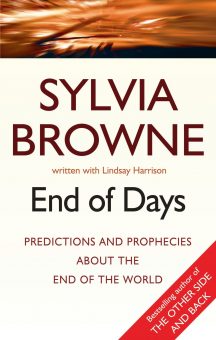him and bestowed on him the stigmata. He prayed that the wounds disappear, saying, “I do want to suffer, even to die of suffering, but all in secret.” The stigmata disappeared, but only temporarily.
Padre Pio suffered from chronic poor health, and he was in and out of the religious community for several years, continuing his daily Mass and life of piety wherever he went and eventually becoming the spiritual director of an agricultural community called San Giovanni Rotondo on the Italian Gargano Promontory. There he developed and followed five rules for spiritual growth:
weekly confession
daily communion
spiritual reading
meditation
examination of conscience
And he created his motto: Pray, Hope and Don’t Worry.
It was during a period of heightened intensity of prayer among all Christians in 1918 to end World War I that Padre Pio’s stigmata returned. First came a vision during which Christ came to him and pierced his side, leaving a visible wound. Weeks later, Christ appeared again and left visible wounds in his hands and feet, and this time the five wounds of Jesus’s Crucifixion stayed with him for the rest of his life.
Word spread of Padre Pio’s stigmata and his recurring visions of Christ, and he was examined by countless physicians and questioned endlessly by both devotees and detractors, within and outside the Catholic Church. For better or worse, he became a phenomenon, and a source of such celebrity that huge crowds began gathering in the small community of San Giovanni Rotondo. The church was forced to restrict the public’s access to him to prevent riots, and he was ultimately ordered to cease all church-related responsibilities and practices with the exception of private Mass. The more famous he became, the more the accusations against him escalated. To name just a few:
- insanity, largely due to his claims of visions
- deception, especially that he used acid to create and maintain the stigmata
- immorality toward women, including allegations of intercourse with women in the confessional
- “perverting the fragile lives and souls of boys,” as a result of which he was forbidden to teach the male youth at the monastery
- misappropriation of funds
Many of his accusers were high-ranking Catholics, and in 1933 Pope Pius XI began taking his own look at the ugly controversy swirling around the celebrity priest. In a declaration that almost single-handedly restored order and dignity to the situation, he finally announced, “I have not been badly disposed toward Padre Pio, but I have been badly informed.” Padre Pio’s duties and privileges were restored and expanded, and in 1939 Pope Pius XII even encouraged visitations and pilgrimages by the priest’s throngs of devotees.
In 1940, Padre Pio initiated plans for a hospital in San Giovanni Rotondo that would be called Home to Relieve Suffering. It officially opened its doors in 1956 and to this day is considered to be one of Europe’s most efficient hospitals. Home to Relieve Suffering gave Padre Pio’s enemies yet another opportunity to hurl accusations at him of misappropriation of funds. But this time it was Pope Paul VI who resoundingly declared a dismissal of all indictments against him.
Padre Pio’s chronic ill health finally claimed his life on September 23, 1968. More than one hundred thousand people attended his funeral, and thirty-four years after his death he was canonized by Pope John Paul II and the Roman Catholic Church that so deeply treasured him and, on occasion, allowed some of its archbishops and bishops to try to destroy him.
Pages: 1 2 3 4 5 6 7 8 9 10 11 12 13 14 15 16 17 18 19 20 21 22 23 24 25 26 27 28 29 30 31 32 33 34 35 36 37 38 39 40 41 42 43 44 45 46 47 48 49 50 51 52 53 54 55 56 57 58 59 60 61 62 63 64 65 66 67 68 69 70 71 72 73 74 75 76 77 78 79 80 81 82 83 84 85 86 87 88 89 90 91 92 93 94 95 96 97 98 99 100 101 102 103 104 105 106 107 108 109 110 111 112 113 114 115 116 117 118 119 120




